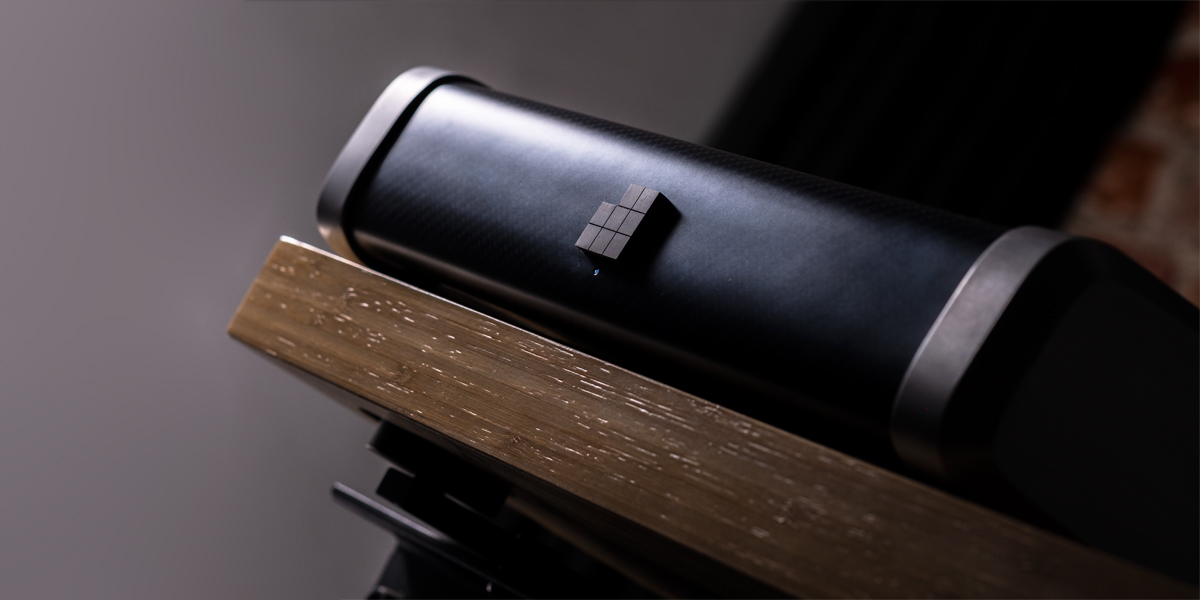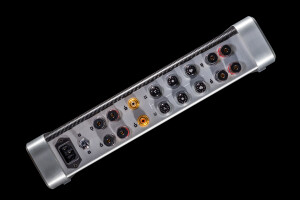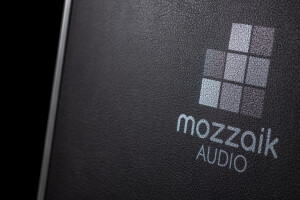We associate class D amps with many things, but distortion ain’t one of them. If anything, such designs have that vanishingly low, but this report’s Mozzaik1 power amp features unique controllers designed to alter and improve sound by purposely injecting distortion. Enjoy!
Introduction
It’s only natural that extensive exposure to various audio products allows one to fairly accurately predict their sound prior to any auditions. Topologically alike devices often share sonic footprint that eventually unravels upon sampling enough of them, of course as long as there’s one to begin with. Some product groups are simply too unpredictable to bother with any expectations, and in my book class D is the most surprising of them all.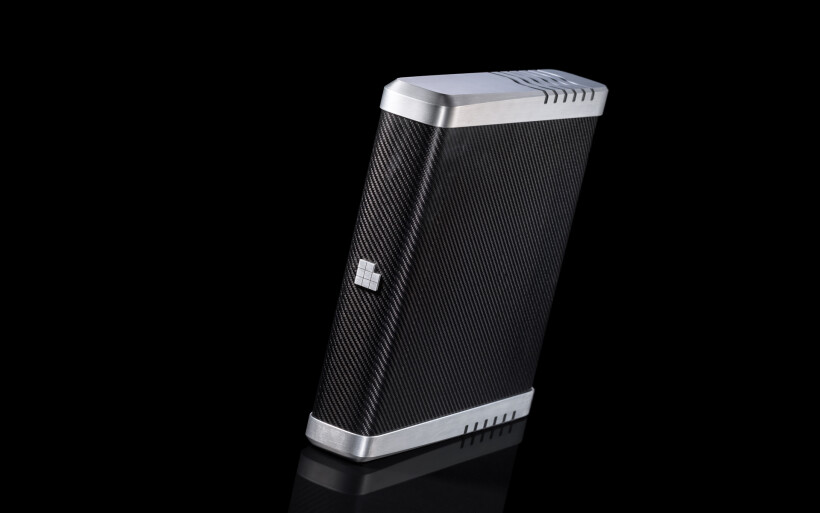 High efficiency and stout power dressed in affordable compact packages are beyond scopes of audiophiles into big hot expensive hardware. Many of them still don’t consider class D as serious enough to compete with class A/AB types, but I do. Most switching amps I’ve reviewed in recent years were performers as capable on sonics as they were diverse. The SPEC RSA-M99 sounded like a purist SET but packed 120wpc into 4Ω, Alberto Guerra’s Vivace was insane on snap, resolution, overall maturity and sonic freshness, and the Aavik I-280 positioned itself in-between them. It’s quite fascinating how broad is the spectrum covered by just these three decks, and how internally distinct they are.
High efficiency and stout power dressed in affordable compact packages are beyond scopes of audiophiles into big hot expensive hardware. Many of them still don’t consider class D as serious enough to compete with class A/AB types, but I do. Most switching amps I’ve reviewed in recent years were performers as capable on sonics as they were diverse. The SPEC RSA-M99 sounded like a purist SET but packed 120wpc into 4Ω, Alberto Guerra’s Vivace was insane on snap, resolution, overall maturity and sonic freshness, and the Aavik I-280 positioned itself in-between them. It’s quite fascinating how broad is the spectrum covered by just these three decks, and how internally distinct they are.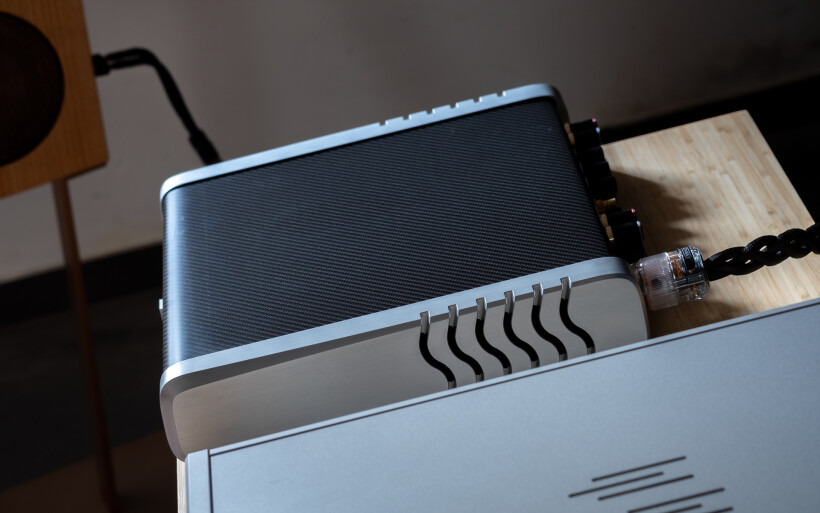 Given the above, any guessing games related to class D sonics seem rather pointless to me now, so I expect the unexpected instead. That unpredictability associated with switching types is in fact quite liberating, exciting and plainly fun. Today’s hero baptized Mozzaik1 promises us just that and there’s nothing like it as far as I’m aware. This is the introductory effort of the company Mozzaik Audio founded in Croatia in 2019 by two programmers; Marko Dvečko and Mihael Munta. The latter gent handles marketing etc., whereas the former is the engineering brain whose patented filter matrix embedded inside their introductory product was designed to address speaker distortion. The difficulty here seems obvious. How an amp can know a specific load type that connects to it, let alone mapping and fixing its imperfections? And even if so, is such a repairing procedure any meaningful? That’s what we’re about to find out.
Given the above, any guessing games related to class D sonics seem rather pointless to me now, so I expect the unexpected instead. That unpredictability associated with switching types is in fact quite liberating, exciting and plainly fun. Today’s hero baptized Mozzaik1 promises us just that and there’s nothing like it as far as I’m aware. This is the introductory effort of the company Mozzaik Audio founded in Croatia in 2019 by two programmers; Marko Dvečko and Mihael Munta. The latter gent handles marketing etc., whereas the former is the engineering brain whose patented filter matrix embedded inside their introductory product was designed to address speaker distortion. The difficulty here seems obvious. How an amp can know a specific load type that connects to it, let alone mapping and fixing its imperfections? And even if so, is such a repairing procedure any meaningful? That’s what we’re about to find out.
Build
The loaner sample arrived inside a regular cardboard that stored the nicest flight case I’ve seen to date. One of Pelican’s regular water/crush/dustproof suspects would do just fine, but the team Mozzaik Audio clearly wanted to make the first impression memorable and they did. If a newcomer operation wants to be remembered, going that extra mile wherever possible is the smart play.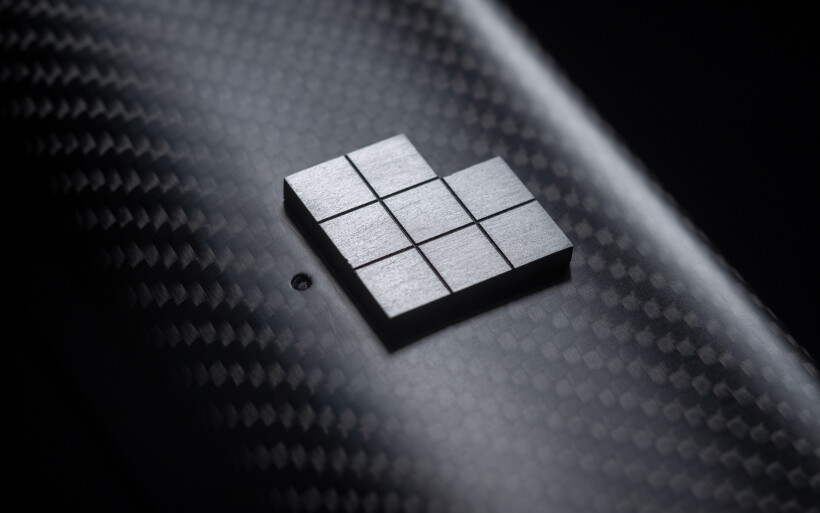 Mozzaik Audio’s robust gray box with leather-alike front/back walls housed a product dressed even more sharply. Mozzaik1 is a stereo power amp/signal processor that measures (W x H x D) 36 x 7 x 36cm and weighs 7kg, so is enjoyably compact and light to carry around. One carbon-fiber piece forms its hood and forehead with the manufacturer’s logo and white power LED underneath, whilst a single gently bent aluminium plate makes the business end and bottom. Hefty CNC-milled aluminium blocks on the Croatian amp’s both cheeks feature perforations for extra heat dissipation. It runs barely warm even during intense workouts, and its luxurious casework is visually very distinct and nicely put together. Given in-house assembly and involved materials, Mozzaik1’s shell had to be costly to make.
Mozzaik Audio’s robust gray box with leather-alike front/back walls housed a product dressed even more sharply. Mozzaik1 is a stereo power amp/signal processor that measures (W x H x D) 36 x 7 x 36cm and weighs 7kg, so is enjoyably compact and light to carry around. One carbon-fiber piece forms its hood and forehead with the manufacturer’s logo and white power LED underneath, whilst a single gently bent aluminium plate makes the business end and bottom. Hefty CNC-milled aluminium blocks on the Croatian amp’s both cheeks feature perforations for extra heat dissipation. It runs barely warm even during intense workouts, and its luxurious casework is visually very distinct and nicely put together. Given in-house assembly and involved materials, Mozzaik1’s shell had to be costly to make. Mozzaik1’s rear end houses an IEC inlet with the main on/off knob just next to it, whilst one pair of RCA inputs and six dials sit in-between double speaker terminals next in line. Prior to explaining what these mysterious knobs do and how, let’s take a look at the product’s topology and specs. This class D design incorporates two Pascal’s T-PRO-2 stereo modules for quad mono action. Its upper/lower terminals pack 220/150wpc into 8Ω respectively, share 32dB voltage gain and allow for bi-amping. Input impedance is 50kΩ, THD+N is 0.003% (@1W, 1kHz, 8Ω) and so is transient IMD (@10W, 8Ω), whereas intermodulation distortion (@10W, 18kHz&19kHz, 8Ω) is 0.004%.
Mozzaik1’s rear end houses an IEC inlet with the main on/off knob just next to it, whilst one pair of RCA inputs and six dials sit in-between double speaker terminals next in line. Prior to explaining what these mysterious knobs do and how, let’s take a look at the product’s topology and specs. This class D design incorporates two Pascal’s T-PRO-2 stereo modules for quad mono action. Its upper/lower terminals pack 220/150wpc into 8Ω respectively, share 32dB voltage gain and allow for bi-amping. Input impedance is 50kΩ, THD+N is 0.003% (@1W, 1kHz, 8Ω) and so is transient IMD (@10W, 8Ω), whereas intermodulation distortion (@10W, 18kHz&19kHz, 8Ω) is 0.004%.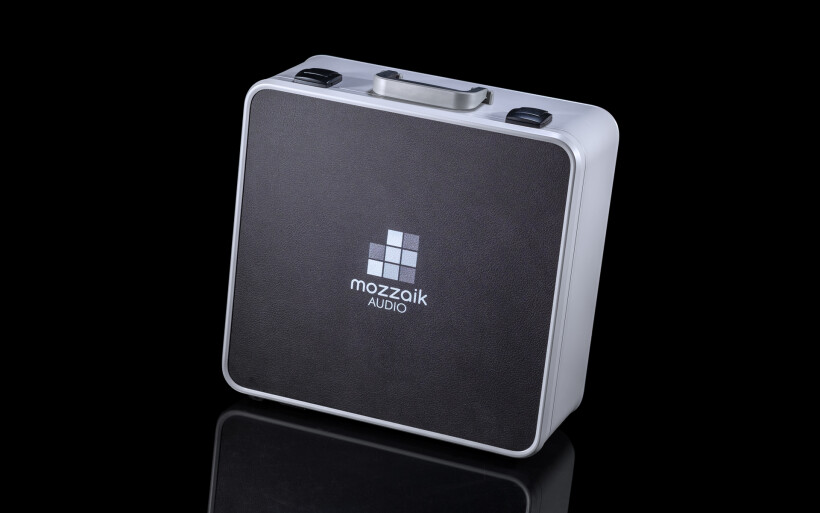 Marko asked about his OEM boards of choice explained that Pascal’s modules sounded great and and featured specs fit for his key function to integrate properly. Here we arrive at today’s signature feature in form of Mozzaik1’s proprietary discrete filter matrix that processes input signal in the analogue domain. This active module adds 6dB of voltage gain on top of used switching circuits’ own 26dB, and its coupling with the product’s six rear knobs effectively allows a listener to adjust signal in a solid-state device. We’re used to tubes, DSP and analog equalizers, but Mozzaik1’s ASP twist designed to purposely inject distortion is none of that.
Marko asked about his OEM boards of choice explained that Pascal’s modules sounded great and and featured specs fit for his key function to integrate properly. Here we arrive at today’s signature feature in form of Mozzaik1’s proprietary discrete filter matrix that processes input signal in the analogue domain. This active module adds 6dB of voltage gain on top of used switching circuits’ own 26dB, and its coupling with the product’s six rear knobs effectively allows a listener to adjust signal in a solid-state device. We’re used to tubes, DSP and analog equalizers, but Mozzaik1’s ASP twist designed to purposely inject distortion is none of that.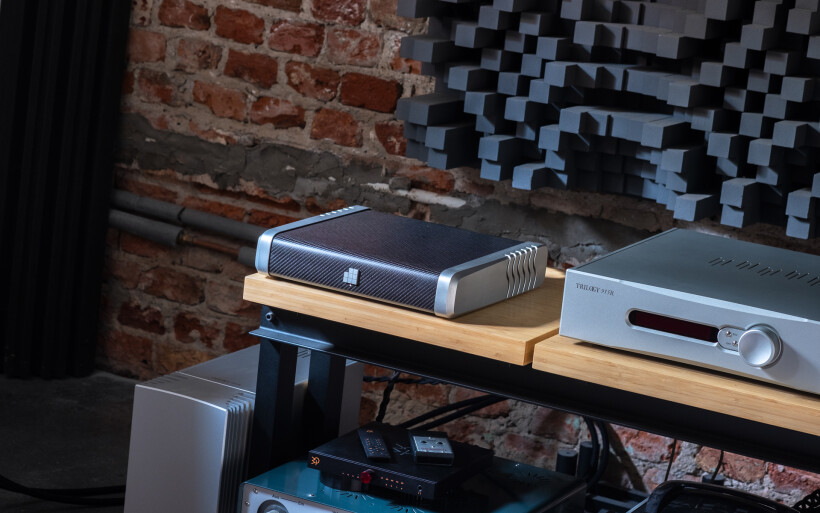 At first I wondered whether mounting Mozzaik1’s unusual controllers on its rear was a good idea, but considering their occasional usage it made sense to put them there and preserve the product’s clean minimalist front panel. Marko also explained that anything fancier a’la hidden compartments, displays on the front etc. would significantly increase his amp’s already steep asking price. To me that’s fair enough given R&D compromises new business have to make, but you be the judge whether Mozzaik1’s functional side sorted as is would work for you or not. Each its upper dial for coarse control (0-6 ~6.67dB clicks) does the same as its lower counterpart for fine control (0-11 ~0.83dB clicks), whilst their three groups in total apply as many filters; compensation frequency, speaker compensation and psychoacoustic characteristics.
At first I wondered whether mounting Mozzaik1’s unusual controllers on its rear was a good idea, but considering their occasional usage it made sense to put them there and preserve the product’s clean minimalist front panel. Marko also explained that anything fancier a’la hidden compartments, displays on the front etc. would significantly increase his amp’s already steep asking price. To me that’s fair enough given R&D compromises new business have to make, but you be the judge whether Mozzaik1’s functional side sorted as is would work for you or not. Each its upper dial for coarse control (0-6 ~6.67dB clicks) does the same as its lower counterpart for fine control (0-11 ~0.83dB clicks), whilst their three groups in total apply as many filters; compensation frequency, speaker compensation and psychoacoustic characteristics.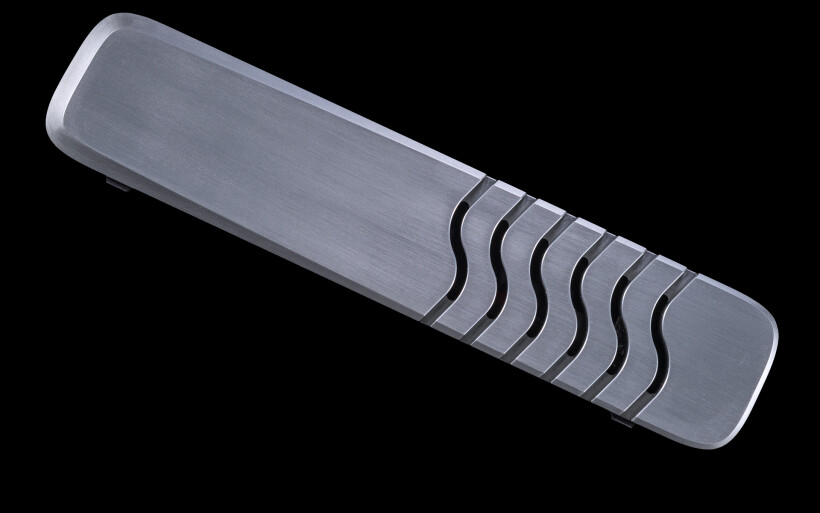 Mozzaik1 was designed to predict and counteract a connected speaker’s harmonic distortion by injecting out-of-phase distortion that cancels it out at one’s ear. The general MO is thus somewhat similar to ANC as found in headphones, but designed for speakers and without any measuring hardware involved. That’s why it’s up to a listener to adjust everything manually and in large part rely on his/hers ears as the main measuring tool. Knobs that control compensation frequency should be set as close to the frequency at which a speaker’s tweeter kicks in, so knowing that number is a good start. Mozzaik Audio provides a helpful chart that shows how many coarse and fine clicks land a desired frequency value, or the number closest to it.
Mozzaik1 was designed to predict and counteract a connected speaker’s harmonic distortion by injecting out-of-phase distortion that cancels it out at one’s ear. The general MO is thus somewhat similar to ANC as found in headphones, but designed for speakers and without any measuring hardware involved. That’s why it’s up to a listener to adjust everything manually and in large part rely on his/hers ears as the main measuring tool. Knobs that control compensation frequency should be set as close to the frequency at which a speaker’s tweeter kicks in, so knowing that number is a good start. Mozzaik Audio provides a helpful chart that shows how many coarse and fine clicks land a desired frequency value, or the number closest to it.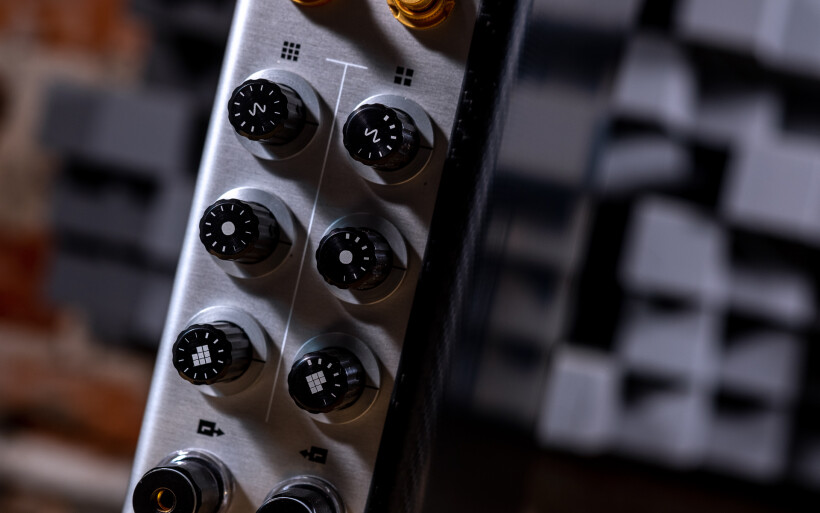 Next a user should set two speaker compensation controllers that inject 2nd-order harmonic distortion to counter those inherent to a given speaker. Here it’s worth knowing that the smaller a tweeter is, the more pronouncedly these dials can handle its adiabatic distortion. Although this effectively leaves small domes as the most susceptible to Marko’s filter matrix, most loudspeakers on the market incorporate them so his invention covers quite the spectrum. Moving on, the first and second filter type were designed to work together, so the latter’s adjustment level should either match the former’s settings, or be a bit higher. The remaining two knobs however operate solo to compensate our ear/brain’s subjective distortion by adding 2nd-, 3rd-, 4th- and 5th-order harmonics. Here there’s only one rule: by all means adjust to achieve audibly the most pleasing effect to you. How refreshingly cool is that? If tinkering with THD like so isn’t fun, then I’m clueless what is.
Next a user should set two speaker compensation controllers that inject 2nd-order harmonic distortion to counter those inherent to a given speaker. Here it’s worth knowing that the smaller a tweeter is, the more pronouncedly these dials can handle its adiabatic distortion. Although this effectively leaves small domes as the most susceptible to Marko’s filter matrix, most loudspeakers on the market incorporate them so his invention covers quite the spectrum. Moving on, the first and second filter type were designed to work together, so the latter’s adjustment level should either match the former’s settings, or be a bit higher. The remaining two knobs however operate solo to compensate our ear/brain’s subjective distortion by adding 2nd-, 3rd-, 4th- and 5th-order harmonics. Here there’s only one rule: by all means adjust to achieve audibly the most pleasing effect to you. How refreshingly cool is that? If tinkering with THD like so isn’t fun, then I’m clueless what is.
Sound
Innuos Statement handled storage/transport, then a LampizatOr Pacific DAC (KR Audio T-100/Living Voice 300B + KR Audio 5U4G Ltd. Ed.) passed signal to a Trilogy 915R/995R set, or Mozzaik1 loner fronted by Trilogy’s preamp. From there Boenicke S3 speaker cable connected either to sound|kaos Vox 3afw or Boenicke Audio W11 SE+ speakers. Interconnects used were Boenicke Audio IC3 CG and XLRs which I DIY-ed. All key hardware was powered by Boenicke Audio Power Gate distributor box plus its three captive M2 cords and two LessLoss C-MARCs. The USB chain included only one Mercury3.0 USB cable. A set of external LessLoss Firewall for Loudspeakers modules complimented both speaker sets, while a Fidelizer EtherStream was in-between my Linksys WRT160N router and Innuos Statement server. ISOL-8’s Prometheus PSU connected to the router and network switch.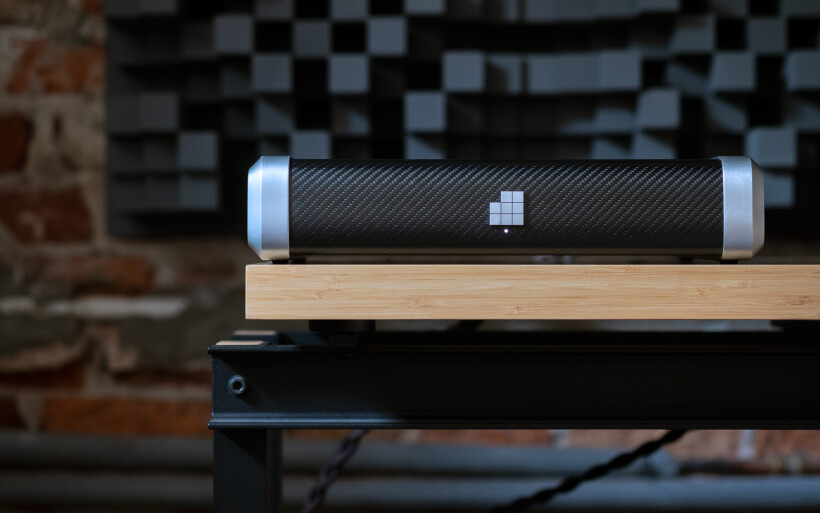 The plan how to handle Mozzaik1 wasn’t any complicated or unusual. Boenicke Audio’s W11 SE+ was my primary load of choice, and later on sound|kaos Vox 3afw monitors were also used. The Croatian loaner had to fight against Trilogy’s far dearer 995R monos biased into class A. Swaps between both contestants demanded reconnecting speaker cables and interconnects, which was a fairly quick easy procedure. To map Mozzaik1’s core flavor I had to first audition it with all compensation filters disengaged, and then Marko himself tailored them to Swiss floorstanders.
The plan how to handle Mozzaik1 wasn’t any complicated or unusual. Boenicke Audio’s W11 SE+ was my primary load of choice, and later on sound|kaos Vox 3afw monitors were also used. The Croatian loaner had to fight against Trilogy’s far dearer 995R monos biased into class A. Swaps between both contestants demanded reconnecting speaker cables and interconnects, which was a fairly quick easy procedure. To map Mozzaik1’s core flavor I had to first audition it with all compensation filters disengaged, and then Marko himself tailored them to Swiss floorstanders.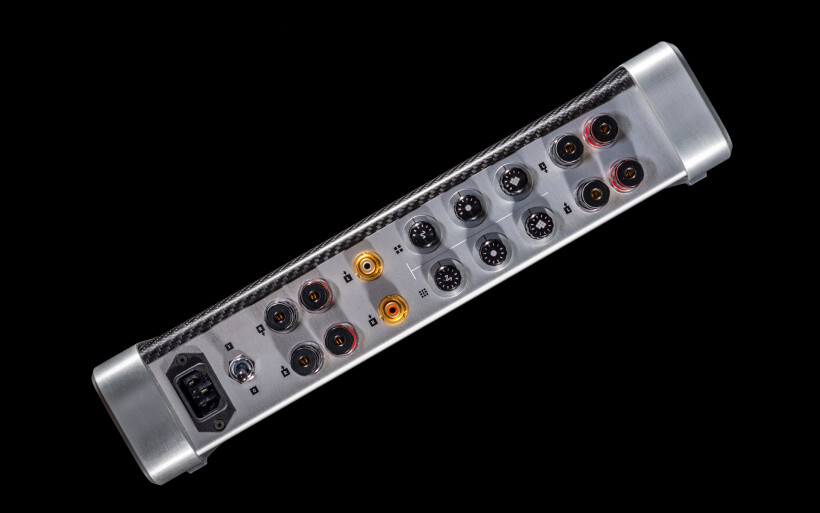 Let me start from Aavik’s I-280 deck reviewed here half a year ago. It was the most recent class D suspect I had under my journo scope and I remember this integrated rather well. Its main opponent Kinki Studio EX-M1 is known for quickness, illumination, control, punchiness, spaciousness and air, but against the Aavik it emerged as bloomier rounder type with tonal center of gravity lower for audibly lazier milder sound. The Dane had more control over bass, punched sensibly harder, was speedier and projected a touch thinner sharper instrumental and vocal outlines for higher score on agility, clarity and pronunciation. I truly hadn’t seen all that coming.
Let me start from Aavik’s I-280 deck reviewed here half a year ago. It was the most recent class D suspect I had under my journo scope and I remember this integrated rather well. Its main opponent Kinki Studio EX-M1 is known for quickness, illumination, control, punchiness, spaciousness and air, but against the Aavik it emerged as bloomier rounder type with tonal center of gravity lower for audibly lazier milder sound. The Dane had more control over bass, punched sensibly harder, was speedier and projected a touch thinner sharper instrumental and vocal outlines for higher score on agility, clarity and pronunciation. I truly hadn’t seen all that coming.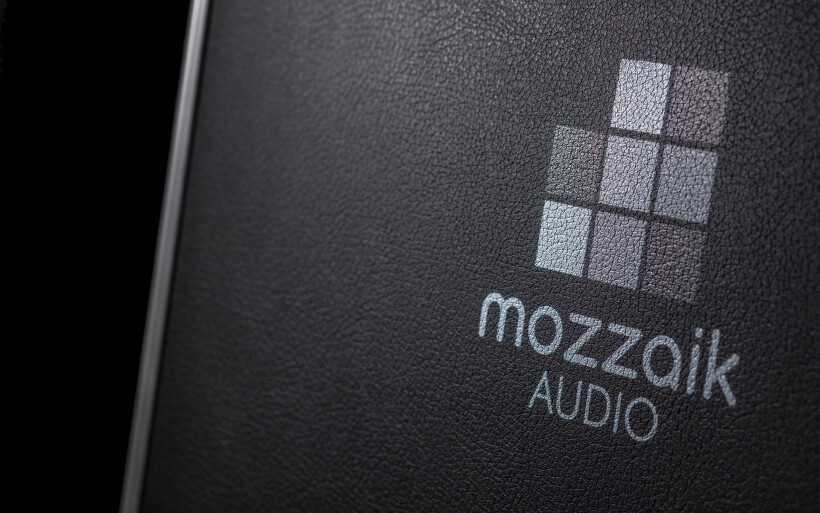 Although early on the EX-M1’s more distant, picturesque and denser profile seemed a better match for the resolving W11 SE+, in time the I-280 emerged as more polished; even smoother, more articulate, and with top end weightier, more nuanced and sustained in air for longer. Blacker fully developed grainless backdrop sealed the deal. All things considered it was quite clear which integrated was higher up in the food chain, however the Aavik’s gearing for speed, spatial might and associated traits didn’t make it a one-trick pony. It didn’t know how to sound skinny, dry, chiseled, hot or piercing. Quite the contrary in fact, this amp was truly big on tone and that was one of its most pronounced traits. Back then I thought that silencing tweaks inside it injected extra color and heft, boosted reflexes and extended decay, whilst more firm control and blacker canvas followed.
Although early on the EX-M1’s more distant, picturesque and denser profile seemed a better match for the resolving W11 SE+, in time the I-280 emerged as more polished; even smoother, more articulate, and with top end weightier, more nuanced and sustained in air for longer. Blacker fully developed grainless backdrop sealed the deal. All things considered it was quite clear which integrated was higher up in the food chain, however the Aavik’s gearing for speed, spatial might and associated traits didn’t make it a one-trick pony. It didn’t know how to sound skinny, dry, chiseled, hot or piercing. Quite the contrary in fact, this amp was truly big on tone and that was one of its most pronounced traits. Back then I thought that silencing tweaks inside it injected extra color and heft, boosted reflexes and extended decay, whilst more firm control and blacker canvas followed.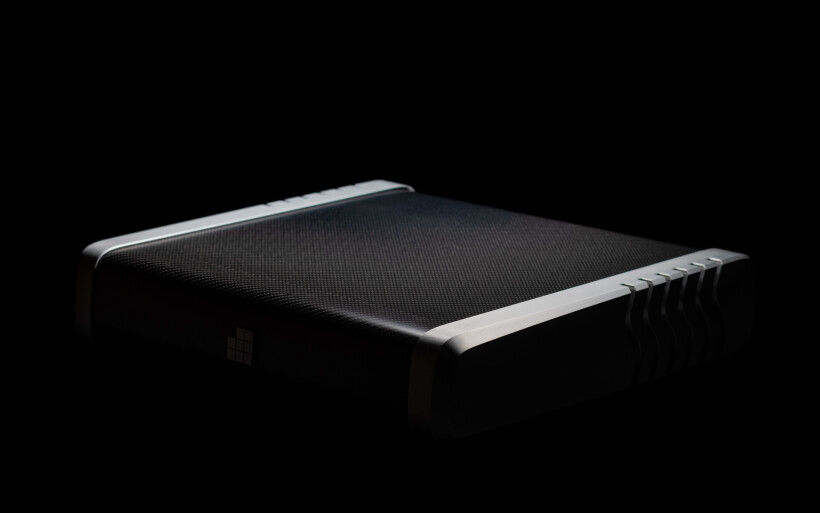 The Aavik not only had the upper hand on quickness, power and elasticity, but also on tonal qualities; expressiveness, politeness, sensuality and ability to finely differentiate textures on instruments and voices. The I-280 portrayed female whispers a touch cooler yet more organic and convincing versus the Kinki’s warmer, more voluptuous and a tad distant take. Now to encapsulate everything, quickness tastefully combined with generous tone was the Dane’s greatest asset, and quite the accomplishment on its own right. Now with this scenery set, enter Mozzaik1 and its maker Marko.
The Aavik not only had the upper hand on quickness, power and elasticity, but also on tonal qualities; expressiveness, politeness, sensuality and ability to finely differentiate textures on instruments and voices. The I-280 portrayed female whispers a touch cooler yet more organic and convincing versus the Kinki’s warmer, more voluptuous and a tad distant take. Now to encapsulate everything, quickness tastefully combined with generous tone was the Dane’s greatest asset, and quite the accomplishment on its own right. Now with this scenery set, enter Mozzaik1 and its maker Marko. En route to Sweden Marko had planned a one-day stop in Warsaw, just so he could meet with yours truly and in person introduce the product with all its elaborate compensation dials. My guest agreed that it was a good idea to first have these inactive. Although Mozzaik1 didn’t fight with the EX-M1 but far dearer Trilogy’s monos, it instantly felt pleasantly familiar. In comparison to these British hulks it sounded tonally darker, less visceral, milder and rounder, but also similarly massive on on-stage sizing and certainly not fluffy at all. The Croatian clearly didn’t lack horsepower to handle large Swiss speakers with ease and I expected nothing less, but its more grounded flavor versus the two 995Rs was telling. Without having the Aavik nearby I couldn’t say how far apart Mozzaik1 was from it, but their priority lists struck me as very similarly sorted.
En route to Sweden Marko had planned a one-day stop in Warsaw, just so he could meet with yours truly and in person introduce the product with all its elaborate compensation dials. My guest agreed that it was a good idea to first have these inactive. Although Mozzaik1 didn’t fight with the EX-M1 but far dearer Trilogy’s monos, it instantly felt pleasantly familiar. In comparison to these British hulks it sounded tonally darker, less visceral, milder and rounder, but also similarly massive on on-stage sizing and certainly not fluffy at all. The Croatian clearly didn’t lack horsepower to handle large Swiss speakers with ease and I expected nothing less, but its more grounded flavor versus the two 995Rs was telling. Without having the Aavik nearby I couldn’t say how far apart Mozzaik1 was from it, but their priority lists struck me as very similarly sorted.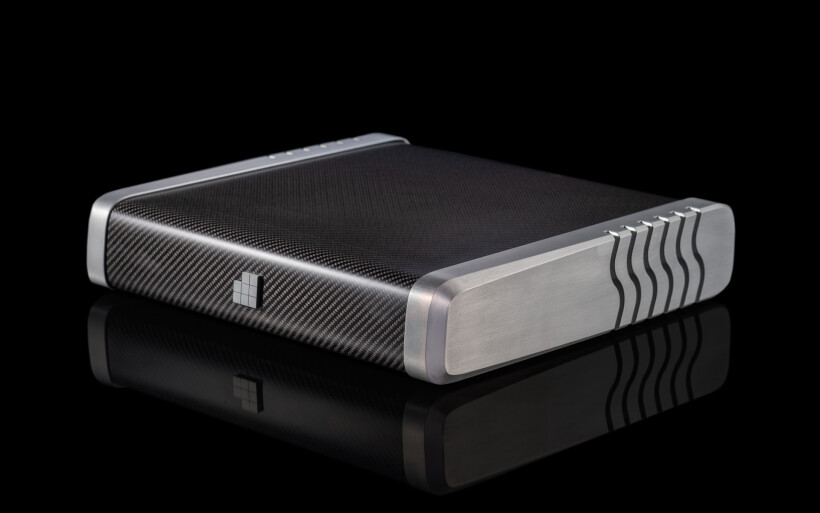 Prior to Marko’s arrival I didn’t even bother checking what engine type was inside his introductory product. It seemed silly given how diverse performers class D amps are these days, but after spending about half an hour with the man’s distinctively voiced product I had to ask. Its tonal qualities, wide color range, expressiveness and pleasure emphasized this pronouncedly couldn’t be a coincidence. Long story short, they weren’t. Pascal’s switching hearts inside Mozzaik1 and Aavik I-280 was the common ground and important at that. This finding rather nicely explained why today’s machine sounded so familiar. My ears making the connection prior to learning about Marko’s class D module of choice was the most valuable private upshot of this story.
Prior to Marko’s arrival I didn’t even bother checking what engine type was inside his introductory product. It seemed silly given how diverse performers class D amps are these days, but after spending about half an hour with the man’s distinctively voiced product I had to ask. Its tonal qualities, wide color range, expressiveness and pleasure emphasized this pronouncedly couldn’t be a coincidence. Long story short, they weren’t. Pascal’s switching hearts inside Mozzaik1 and Aavik I-280 was the common ground and important at that. This finding rather nicely explained why today’s machine sounded so familiar. My ears making the connection prior to learning about Marko’s class D module of choice was the most valuable private upshot of this story.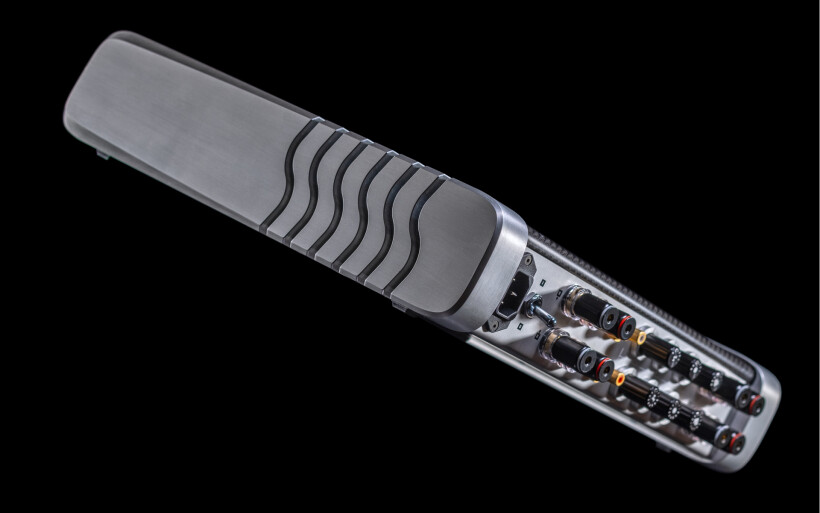 Without its key features yet engaged Mozzaik1 already sounded admirably seasoned and geared for just the right traits to please most individuals. Its inability to bluntly dissect music into particles was smart. Such voicing left tension, itchiness, dryness, sharp edges, hollowness and the remaining skinny lot at the door. It was clear that Marko likes listening to music instead of individual sounds excessively magnified, but his Mozzaik1 didn’t suffer from diseases associated with the other end of the spectrum either; wooliness, sluggishness, veil, bloat, abnormal warmth etc. This amp prioritized vibrant colors and prettiness more than insight and air, but within reasonable margin to land properly distinct self-sound aka personality without going extreme.
Without its key features yet engaged Mozzaik1 already sounded admirably seasoned and geared for just the right traits to please most individuals. Its inability to bluntly dissect music into particles was smart. Such voicing left tension, itchiness, dryness, sharp edges, hollowness and the remaining skinny lot at the door. It was clear that Marko likes listening to music instead of individual sounds excessively magnified, but his Mozzaik1 didn’t suffer from diseases associated with the other end of the spectrum either; wooliness, sluggishness, veil, bloat, abnormal warmth etc. This amp prioritized vibrant colors and prettiness more than insight and air, but within reasonable margin to land properly distinct self-sound aka personality without going extreme.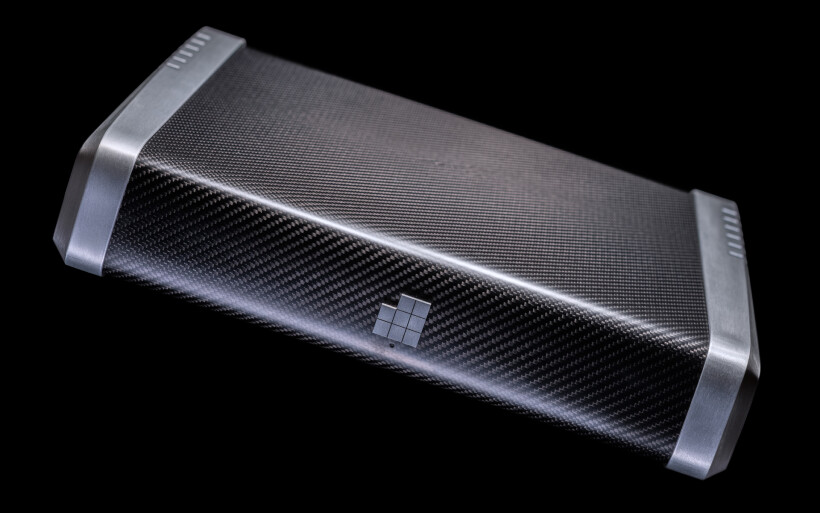 Past mapping Mozzaik1’s core profile it was time for Marko to adjust its knobs to my speakers. Although I didn’t count all back and forths the man did, there were many, and the entire process took him about half an hour. Possible dial combinations seemed pretty much endless, so I didn’t think this job could’ve been done any faster. The photo below shows today’s settings specific for my W11 SE+ speakers, and here it’s fair to mention that on my own I wasn’t able to land a more pleasing result. Marko adjusted his product at my place without any second thoughts or hesitation. From this I gathered that he knew exactly what to change and by how much, so his ears also had to be in check.
Past mapping Mozzaik1’s core profile it was time for Marko to adjust its knobs to my speakers. Although I didn’t count all back and forths the man did, there were many, and the entire process took him about half an hour. Possible dial combinations seemed pretty much endless, so I didn’t think this job could’ve been done any faster. The photo below shows today’s settings specific for my W11 SE+ speakers, and here it’s fair to mention that on my own I wasn’t able to land a more pleasing result. Marko adjusted his product at my place without any second thoughts or hesitation. From this I gathered that he knew exactly what to change and by how much, so his ears also had to be in check. At first Mozzaik1’s signature distortion injectors seemed very subtle in action and this didn’t change much in time. These knobs weren’t designed to drastically alter the amp’s core sound but rather fine tune it to one’s preference more than anything else. To put this into perspective, changes associated with i.e. power cables or reclockers can be far more audible. That’s why early on I had a hard time to actually track sonic shifts even past fully turning Mozzaik1’s dials from one end to another. Marko’s settings were my golden reference but not crazy audible still, so even considering that I had nothing firm to hold on to.
At first Mozzaik1’s signature distortion injectors seemed very subtle in action and this didn’t change much in time. These knobs weren’t designed to drastically alter the amp’s core sound but rather fine tune it to one’s preference more than anything else. To put this into perspective, changes associated with i.e. power cables or reclockers can be far more audible. That’s why early on I had a hard time to actually track sonic shifts even past fully turning Mozzaik1’s dials from one end to another. Marko’s settings were my golden reference but not crazy audible still, so even considering that I had nothing firm to hold on to.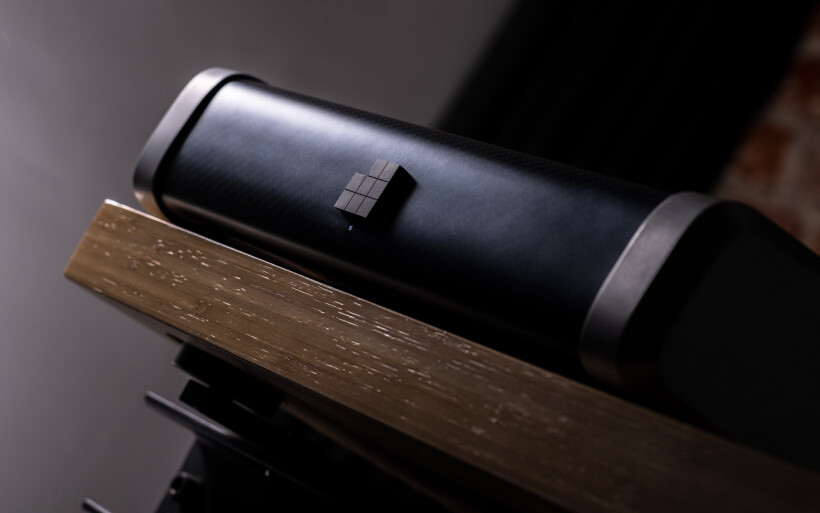 Mozzaik1 wasn’t the first product that left me in the dark early on. Usually when this happens it’s time to take a step back, have a break and don’t rush anything. After several days free from any auditions some distinctions eventually fleshed out to grow more and more audible, and finally to become perhaps not obvious but noticeable. The trick was in understanding that changes introduced by Mozzaik1’s filter matrix don’t belong where live those made by power tweaks, decouplers and other noise sorters. Simply put, today’s knobs did the type of work I hadn’t yet experienced. This action apparently subtle by nature took me a while to ‘learn’ and track, but also revolved around imaging focus more loose or locked in, reverb either increased or shortened, and virtual sound sources a touch distant/dry or closer/moisturized better. Adjust and apply as you see fit, there’s no right and wrong here. Mozzaik1’s army of dials that allowed for gently playing with these aspects turned out a valuable asset all things considered, not a gimmick. That’s the key takeaway. Even though both my speaker sets free from domed tweeters weren’t ideal partners for Marko’s filters, their action was audible and meaningful.
Mozzaik1 wasn’t the first product that left me in the dark early on. Usually when this happens it’s time to take a step back, have a break and don’t rush anything. After several days free from any auditions some distinctions eventually fleshed out to grow more and more audible, and finally to become perhaps not obvious but noticeable. The trick was in understanding that changes introduced by Mozzaik1’s filter matrix don’t belong where live those made by power tweaks, decouplers and other noise sorters. Simply put, today’s knobs did the type of work I hadn’t yet experienced. This action apparently subtle by nature took me a while to ‘learn’ and track, but also revolved around imaging focus more loose or locked in, reverb either increased or shortened, and virtual sound sources a touch distant/dry or closer/moisturized better. Adjust and apply as you see fit, there’s no right and wrong here. Mozzaik1’s army of dials that allowed for gently playing with these aspects turned out a valuable asset all things considered, not a gimmick. That’s the key takeaway. Even though both my speaker sets free from domed tweeters weren’t ideal partners for Marko’s filters, their action was audible and meaningful.
Summary
Class D amps have quite the track record at this site. Most such designs I’ve reviewed in recent years were performers serious enough to compete with their respective class AB opponents. Mozzaik1 fits that profile and opens up its makers’ roster with a proper bang, but also is highly unique among its own very diverse kind.
Marko Dvečko and Mihael Munta knew well that a first impression they could make only once. Their introductory product looks enjoyably modern, feels premium, runs cool and outputs enough juice to handle dastardly loads, some surely happy about its double binding posts. Mozzaik1’s signature knobs located on the rear weren’t a big problem given their occasional usage past initial set up, and its packaging is one of the best ones I’ve seen. On fit’n’finish and utilities today’s power amp introduced no reasons to complain, simple as that.
Sonic performance and distortion controllers are Mozzaik1’s two key attractors and that’s very clear. It pleases with dense, open, flowing and a touch darkish mature sound on the other end of dry, pale and lifeless. Although such voicing is very enjoyable as is, the option to noticeably tinker with it makes Mozzaik1 this much more interesting and special, and that’s a job well done if someone asks me. ‘Til next time!
Associated Equipment:
- Amplifier: Trilogy 995R
- DAC: LampizatOr Pacific (KR Audio T-100 / Living Voice 300B + KR Audio 5U4G Ltd. Ed.)
- Speakers: Boenicke Audio W11 SE+, sound|kaos Vox 3afw
- Transport: Innuos Statement
- Preamplifier: Trilogy 915R
- Speaker cables: Boenicke Audio S3, LessLoss C-MARC
- Speaker signal conditioning: LessLoss Firewall for Loudspeakers
- Interconnects: Boenicke Audio IC3 CG
- Power components: Gigawatt PC-3 SE EVO+/LC-3 EVO, LessLoss C-MARC, Boenicke Audio Power Gate, iFi audio PowerStation, ISOL-8 Prometheus
- USB components: iFi audio Mercury3.0
- Rack: Franc Audio Accesories Wood Block Rack
- Network: Fidelizer EtherStream, Linksys WRT160N
- Music: NativeDSD
Retail prices of reviewed components in EU (incl. tax):
- Mozzaik1: €7’999
Manufacturer: Mozzaik Audio


